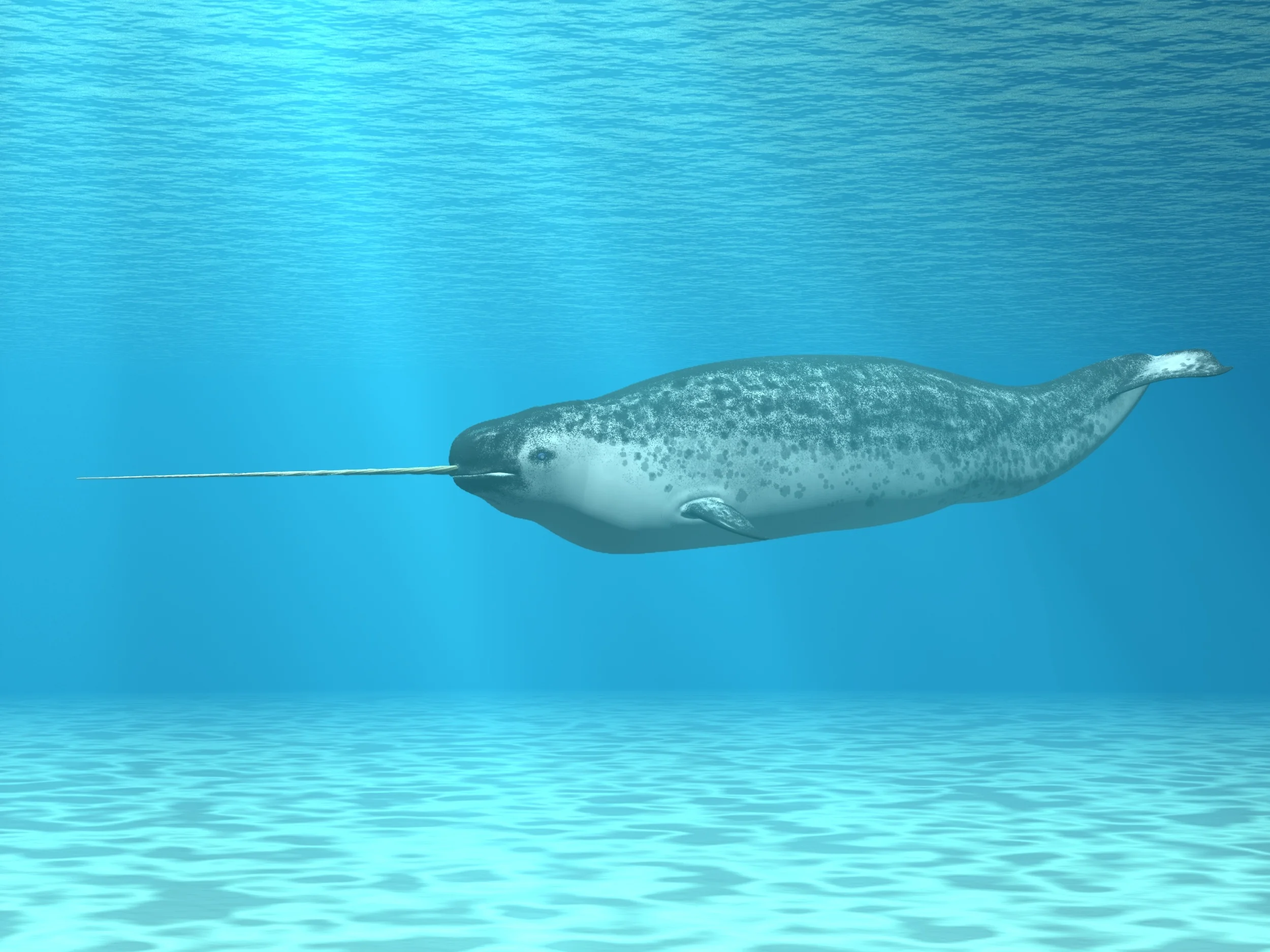Narwahl
"Narwahl" by Karine Forestié (watercolor, permanent ink, and fountain pen)
“The Narwhal is one of many whale species that I love, and I’m always happy to draw unicorns. Painting this narwhal and her calf, with the missing ice fields is a reminder of what humans are just unable to stop ruining the planet’s climate, for reasons that make no sense at all. I mean, we all live in there...”
Your purchase is helping Expedition Art and Saving Species purchase land in Sumatra! Learn more about the project.
Habitat
Narwhals are found in the Arctic waters of the Atlantic, close to Canada, Greenland, Norway and Russia. They migrate between the seasons of winter and summer, spending their winters offshore and their summers in ice-free bays and fjords.
Family life
Narwhals are related to other marine mammals including bottlenose dolphins, belugas, harbor porpoises and orcas. They live in primary groups of two to ten individuals but may also congregate in larger groups of hundreds and sometimes thousands, especially during migrations. Females give birth every three years and gestation usually lasts around 15 months. Males are unique in their possession of the iconic tusk, though there have been instances of females with a single tusk and males with multiples.
Lifespan
The narwhal is largely considered too big to live successfully in captivity. In the wild, it has a life expectancy of approximately 50 years.
Hunting Habits/Diet
Narwhals do not have many functional teeth so they have adapted a manner of eating in which they create a vacuum and suck their prey into their mouths. They eat squid, a variety of fish and crustaceans.
Population
It is estimated that there are roughly 10,000 to 45,000 narwhals.
Fun Fact
The narwhal is fondly known as the unicorn of the sea. While it is widely considered a tusk, the long spiraled horn that can grow as long as ten feet out of the head of the narwhal is actually a tooth. They are among the deepest-diving mammals, reaching depths of 1,500 meters and diving for anywhere from 7 to 25 minutes.
Why are They Endangered?
The narwhal population is threatened due to predation, climate change and reduction of numbers of some of their main food sources. While the direct impact of climate change on the narwhal has yet to be determined, it affects the formation of ice and also impacts the instance of their prey. Modification and degradation of their habitat due to human activities also impacts the narwhal and other marine animals on which it depends.
Status
Least Concern


